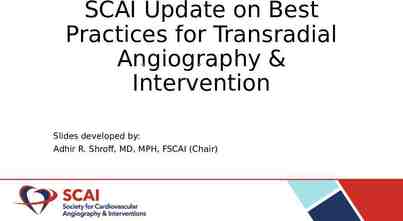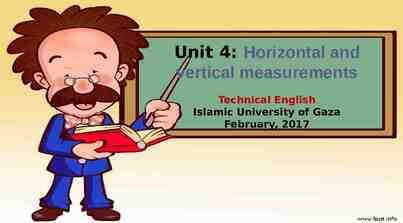Back to the Basics: Effective Case Management Strategies Presented by:
20 Slides555.33 KB
Back to the Basics: Effective Case Management Strategies Presented by: Carol Guertin, WorkSource Atlanta Regional-Rockdale Sheron Morgan, WorkSource Coastal Chidinma “Chi-Chi” Okonkwo, WorkSource Atlanta Chelsea Waters, WorkSource Atlanta Regional-Clayton WorkSource Georgia Academy August 13th, 2018 Classic
Case Management How do you define Case Management? Case Management is a process to plan, seek, advocate for, and monitor services from different social services or organizations and staff on behalf of a client. The process enables workers in an organization, to coordinate their efforts to serve a given client through professional teamwork, thus expanding the range of needed services offered. Case management limits problems arising from fragmentation of services, staff turnover, and inadequate coordination among providers. (Barker, 2003).
Knowledge and Cultural Competency Knowledge- Due to the client population we serve, it is very critical for all individuals performing case management duties to be WIOA knowledgeable. This includes knowledge of the State's policy as well as your agency's Policies and Procedure, processes, and internal (one-stop)/external partners. Cultural Competency- includes knowledge, attitudes, and skills that support providing appropriate services for people from different backgrounds and cultural groups. Culture influences your organization and program performance. Being knowledgeable and culturally competent: Establishes trust between clients and their Advisors Promotes client engagement and buy in Provide clients with useful resources to meet their needs
Assessments Assessment is an ongoing process of gathering information that is applicable to the client, which helps to evaluate concerns, identify strengths, challenges and create goals. WIOA Assessments/planning includes but not limited to: 1. Application 2. TABE 3. Prove IT 4. O*NET Interest Profiler 5. Objective Assessment Summary 6. Individualized Service Strategy (ISS) 7. Individual Employment Plan (IEP)
Case Note Documentation Standards Why is good case documentation necessary? Case notes document the chronology of events and activities through the “life” of an open case record. Case notes may serve as a legal record of the organization’s efforts to serve a customer as well as the customer’s responses. Case notes allow multiple staff to handle issues as they arise because all can reference the current status of a given case. Case notes are invaluable to reviewers in monitoring case activity; usually, the case notes are reviewed first by monitors to frame the case and reference other important case record contents. “If it is not documented, it did not happen!” Case notes allow staff to demonstrate the level and intensity of services provided to customers. Consistency within and among a series of records increases the professionalism of overall case management.
Case Note Documentation Standards (cont.) Who should document? Any staff having contact with the customer or case should document that activity, even if the case is not assigned to that staff person. What should be documented? All case activity and interactions should be noted in the record concisely, objectively, thoroughly, timely, and accurately indicating the following: Telephone calls, emails, office visits, field visits, letters, staffing notes/discussions Summary statements: Closure statements should explain why the case was closed. Transfer statements should explain the progress to date and the reason for transfer; should be a snapshot for the receiving staff person. Keep in mind: “Is the case note specifically relevant to this case record?”
Case Note Documentation Standards (cont.) What should not be documented? Personal impressions, biases, perceptions should be avoided; instead, document concrete observations. Other general rules of documentation: Third person voice should be used, with the Career Advisor referenced “CA”. Hand written entries should never be whitened out or blackened out; instead, a single line should be placed thru the entry and the entry initialed by the staff deleting the entry. Entries should be thorough but not flowery or redundant. Entries should lean toward being more formal than familiar.
Case Note Documentation Standards (cont.) When should case records be documented? Case records should be documented when activity occurs, but no later than two (2) business days after the activity occurs. (use post it notes to jot down main points as reference for later noting) In cases of transfer or closure, the recipient staff or closing reviewer should document the date of receipt and relevant activity. www.workreadyga.org - VOS every 30 days as a minimum. Where should case records be maintained? Case records should be kept accessible to all staff that may need to access them. www.workreadyga.org - VOS under Staff Profiles General Profile Case Notes
Workload Sustainability Workload sustainability is the pace at which an individual handles for a long period, without compromising the quality of the work produced. It is based on a pace that is “doable” for the Case Manager, hoping is doesn’t lead to burnout.
What is BURNOUT? "A state of physical, emotional, and mental exhaustion caused by long term involvement in a emotionally demanding situations." – Ayala Pines and Elliot Aronson. Specific symptoms of burnout include: Having a negative and critical attitude at work Dreading going into work, and wanting to leave once you're there Having low energy, and little interest at work Having trouble sleeping Being absent from work a lot Being irritated easily by team members or clients Having thoughts that your work doesn't have meaning or make a difference Feeling that your work and contribution goes unrecognized
Stress vs. Burnout So, what's the difference between stress and burnout? Although the two share some characteristics, there are distinct differences. Stress is often relatively short-term, and it is often caused by a feeling that work is out of control. You might experience stress several days in a row, if you are working to meet a deadline. However, once the situation changes, stress often lessens or disappears entirely. Stress can affect you over the longer-term, however, it is consist. Burnout often takes place over a longer period. You might experience it if you believe your work is meaningless; when there's a disconnect between what you're currently doing and what you truly want to be doing; or when things change for the worse –your workload increases beyond a sustainable point. You go through "the motions" instead of being truly engaged. Over time, this leads to exhaustion and sometimes, poor performance.
How Did You Do? Score 15-30—OMG!. The good news is that you have a great opportunity to improve your effectiveness at work and your long term success! Score 31-45—Hmmm!.You are good at some things, but there is room for improvement elsewhere. Score 46-75—Well, Well, Well You are managing your time very effectively!!!!
Goal Setting To start managing time effectively, you need to set goals. When you know where you're going, you can then figure out what exactly needs to be done, in what order. A little time and effort put into setting goals (now) saves a lot of time, effort and frustration in the future. Prioritization Prioritizing what needs to be done is very important. Without it, you may work very hard, but you won't be achieving the results you desire because what you are working on is not strategic. Most people have a "to-do" list of some sort. The problem with many of these lists is they are just a collection of things that need to get done. There is no rhyme or reason to the list and, because of this, the work they do is just as unstructured. So how do you work on To Do List tasks – top down, bottom up, easiest to hardest? WORK ON WHAT’S MOST IMPORTANT!!!
Managing Interruptions Having a plan and knowing how to prioritize it is one thing. The next issue is knowing what to do to minimize the interruptions you face during your day. There are phone calls, information requests, questions from co-workers, and a whole host of events that crop up unexpectedly. Some do need to be dealt with immediately, but others need to be managed. Procrastination "I'll get to it later" has led to the downfall of many good Case Managers. After too many "laters" the work piles up so high that any task seems impossible. The best way to beat procrastination it is to recognize that you do indeed procrastinate. Then, you need to figure out why. Once you know why you procrastinate then you can plan to get out of the habit.
Scheduling Much of time management comes down to effective scheduling of your time. When you know what your goals and priorities are, then you can create a schedule that keeps you on track, and protects you from stress. By creating a robust schedule that reflects your priorities and well as supports your personal goals, you have a winning combination: One that will allow you to control your time and Keep your life in balance.
Workload Sustainability Time Management Organizing the Tasks Keeping your work under control, improves your performance and mistakes at a minimum!
Performance and Professional Development Case Management Performance and Programmatic/LWDA Performance Professional Development: Training, Training, Training Read, Read, Read Organize, Organize, Organize
Questions Carol Guertin, WorkSource Atlanta Regional-Rockdale—Email: [email protected] Sheron Morgan, WorkSource Coastal—Email: [email protected] Chidinma “Chi-Chi” Okonkwo, WorkSource Atlanta—Email: [email protected]

























